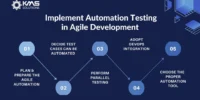Writing code is just one part of the software development process; keeping it clean and maintainable is equally important. A well-organized and tidy codebase contributes to better collaboration, easier debugging, and overall improved productivity. In this article, we’ll explore quick tricks for effective code clean-up, helping you cultivate good programming hygiene.
1. Consistent Indentation and Formatting
Consistent indentation and formatting are the foundation of readable code. Settle on a standard style guide, whether it’s the widely adopted PEP 8 for Python or a style guide specific to your programming language. Use automated tools or IDE features to format your code consistently, ensuring that indentation, spacing, and formatting are uniform throughout the codebase.
2. Remove Unused Code
Unused code is not just unnecessary clutter; it can lead to confusion and increase the cognitive load on developers. Regularly review your codebase and remove any functions, variables, or entire modules that are no longer in use. This not only makes the codebase cleaner but also reduces the chances of introducing bugs related to forgotten or obsolete code.
3. Meaningful Variable and Function Names
Choose descriptive and meaningful names for your variables and functions. A well-named variable or function significantly improves code readability. It serves as documentation and helps others (or yourself) understand the purpose and functionality without delving deep into the code. Avoid overly abbreviated names and prioritize clarity over brevity.
4. Break Down Large Functions and Classes
Large functions and classes can be overwhelming and challenging to maintain. Break them down into smaller, focused functions or methods. Each function should have a single responsibility, making it easier to understand, test, and debug. This practice aligns with the principles of modularity and enhances code maintainability.
5. Comment Thoughtfully
While over-commenting can clutter your code, thoughtful comments can provide valuable insights. Use comments to explain complex algorithms, rationale behind certain decisions, or any code that might be non-intuitive. Ensure that your comments are up-to-date; outdated comments can be misleading and counterproductive.
6. Conduct Code Reviews
Code reviews are not just about catching bugs; they also play a crucial role in maintaining code quality. Regularly engage in code reviews with your team. Peer reviews offer fresh perspectives, identify potential improvements, and ensure that the code adheres to established coding standards. Embrace constructive feedback and continuously strive for code excellence.
7. Implement Version Control Best Practices
Version control systems (e.g., Git) are essential for code collaboration and history tracking. Adhere to version control best practices, including meaningful commit messages, branching strategies, and frequent commits. A well-organized version control history makes it easier to trace changes, roll back to previous states, and collaborate effectively with team members.
8. Test Your Code Thoroughly
Effective code clean-up includes rigorous testing. Implement unit tests, integration tests, and end-to-end tests to ensure the correctness of your code. Testing not only catches bugs early but also serves as documentation for the expected behavior of your functions and modules. A comprehensive test suite is a powerful tool for maintaining code reliability.
9. Use Linters and Code Analysis Tools
Linters and code analysis tools automatically identify and highlight potential issues in your code. Integrate linters into your development workflow to catch common mistakes, enforce coding standards, and ensure consistency. This automated feedback helps you address issues promptly during development.
10. Stay Updated on Best Practices
The field of software development is dynamic, with best practices evolving over time. Stay informed about the latest trends, coding standards, and tools in your programming language or framework. Continuous learning ensures that you integrate new and improved practices into your coding habits, contributing to a cleaner and more efficient codebase.
Conclusion
Code clean-up is not a one-time task but an ongoing process that requires diligence and collaboration. By incorporating these quick tricks into your coding routine, you’ll contribute to a more maintainable, readable, and efficient codebase. Remember, clean code is a collective responsibility that pays off in terms of productivity and code longevity.








